Wrangler’s Donkey Diary: Sarcoid Treatment 7-20-18

Wrangler has almost completely shed out and during my last weekly grooming, I discovered a small sarcoid on his left forearm and decided to consult with my veterinarian, Greg Farrand. Wrangler munched in the fanny pack while we talked.
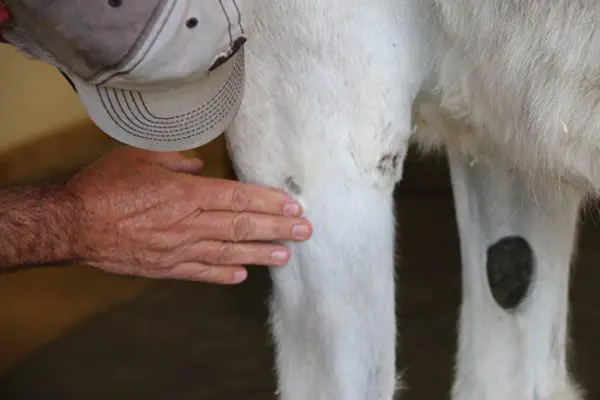
Dr. Farrand Carefully inspected the sarcoid and determined that it was not a candidate for removal because of it’s precarious location. There was no way to grab loose skin around it like there was with prior sarcoids on other animals.
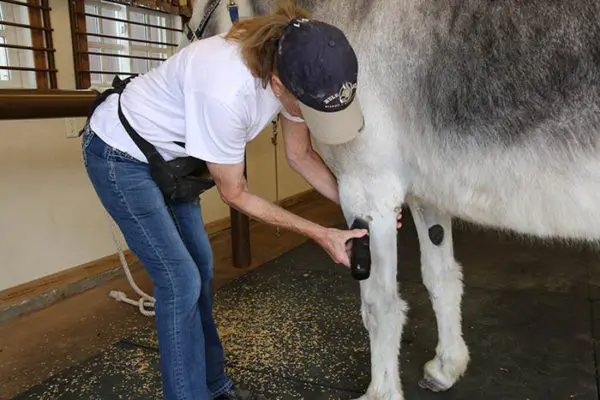
I shaved the area around the sarcoid so we could get a good look at it and so it would absorb the treatment the most efficiently.
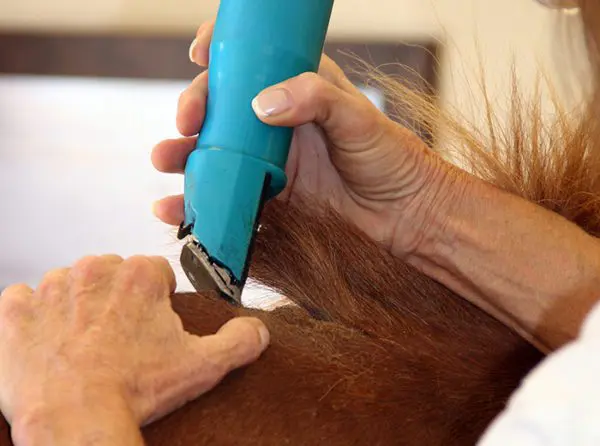
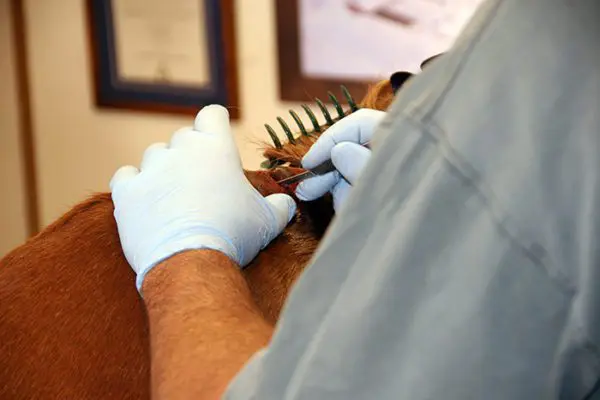
In 2011, Rock had a sarcoid on his neck in front of the withers where there was a lot of fatty tissue and the skin was loose enough to pull the sarcoid away from the body. So, we shaved his neck and removed the sarcoid with surgery. We then had it biopsied to find it was not a serious sarcoid (Better to be safe than sorry!) and it eventually just went away. In the eighties, if we removed a sarcoid, it would have had a follow-up of injections to be completely rid of it. in the nineties, veterinarians discovered another way to treat sarcoids that involved taking a piece of the biopsied sarcoid and reintroducing it as an implant in the neck to prompt an immunity response. Before he could remove one of three sarcoids the from Lucky Three Eclipse, he rubbed one and tore it open. Before we had the chance to biopsy one of the sarcoids for an implant, as if a miracle, his immune system was stimulated by HIM, kicked in and all three sarcoids just disappeared…and no, they were not anything else.

Lucky Three Cyclone also developed a sarcoid on his jaw which we successfully treated with surgery since it also was in a fatty area where we could pinch the skin around it easily. No follow up was necessary…just stitches removal.
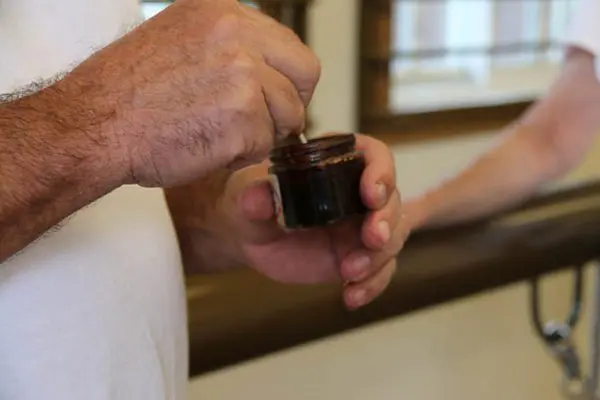
Since Wrangler’s sarcoid was in such a delicate area, we opted to use a topical approach with Xterra, applied with a Q-Tip.
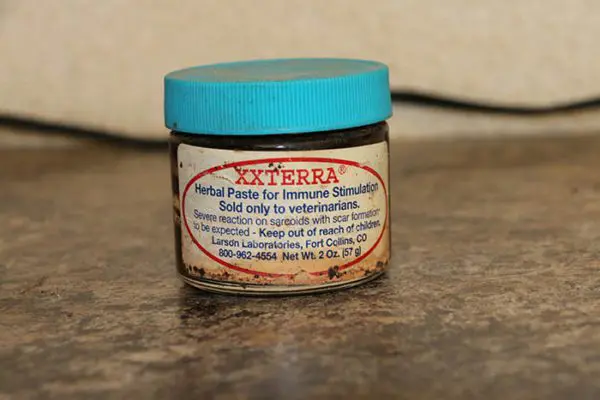
We will apply the Xterra once a day for a week, then stop for a week.
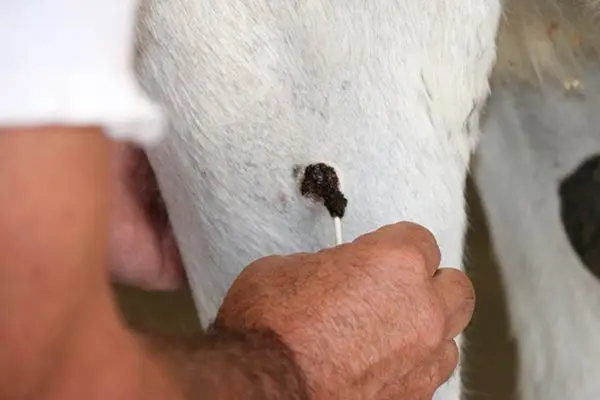
Then we will resume applying the Xterra for another week, stop after a week again and then see how it is progressing.
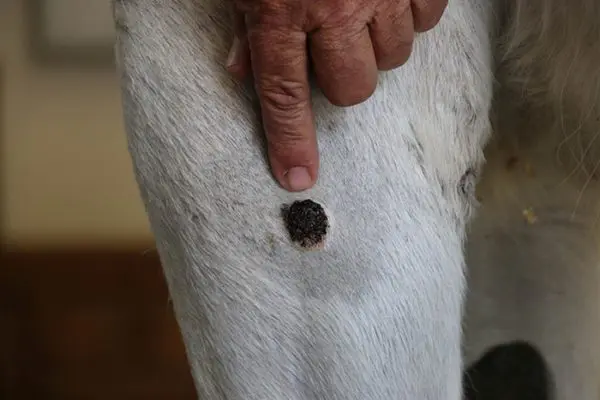
We will continue like this until it is gone. Xterra is surely a better way than the way we had to treat these in the eighties! Wrangler will be sure to keep you posted on his progress!





Paola Di Paolo
August 5, 2018 @ 11:29 am
Amazing. and thank you for the information re sarcoid treatment over time. Our mini donkey has a sarcoid in his ear, about 3 inches down from the tip. He had had one there before, 2 years ago, and the vet surgically removed it but did nothing more. the sarcoid returned this year. Our vet tried liquid nitrogen on it, but poor Gabriel ended up with terrible weeping dermatitis. My vet and I don’t know why – after the treatment I put a fly mask with ears on him as the bugs are bad here. When I took the mask off, some skin came with it! and then wherever little Gabe flopped his ears over, the dermatitis was there too! So we called our vet and he gave him an cortisone injection and I applied some cream. The dermatitis cleared up. But the sarcoid is still there. So then the vet and I decided to let things heal up and wait till the fall when less bugs. We wonder if there was a residue on the fly mask from the factory that reacted with the residue from the frozen nitrogen treatment. So we are going to tackle it surgically in a few weeks and the vet has a cream to put on after (maybe xterra?). In the mean time I have been applying turmeric/golden paste and the base of the sarcoid has decreased by 50% – that is where it attaches to his ear is way smaller.
Meredith
August 31, 2018 @ 4:43 pm
Sarcoids can be very tricky. I always consult with my vet and only put out the information that he has validated. He told me that they can be surgically removed if not in a highly vascular area and there should follow-up treatments after the surgery. If in a vascular area and even in some fatty areas, the Exterra (Xterra, sp?) has worked wonders. I would not cover the ear…just use fly spray (I use Farnum Tr-Tech 14). I do hope you can get it under control!